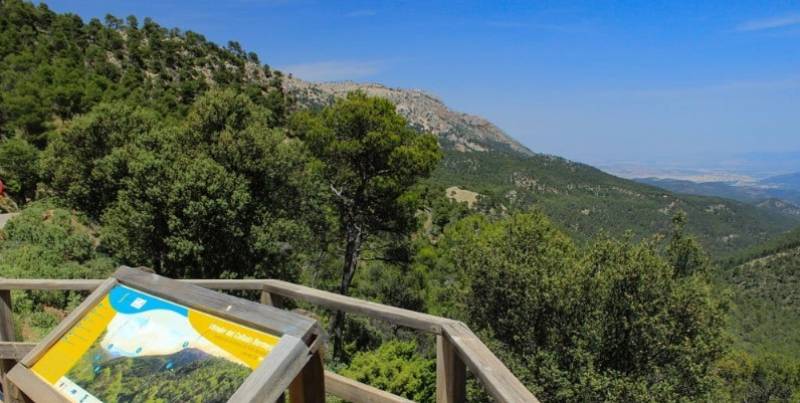Date Published: 17/10/2025
Sierra Espuña receives €1.6 million to combat devastating pine beetle outbreak
Drought and pests have already killed 1.3 million trees across the Region of Murcia
Sierra Espuña's forests have been suffering for years now, with brown, dying trees blotting the otherwise
picture-perfect landscape everywhere you look. Here in the heart of
Alhama de Murcia, Aleppo pines have suffered the most and unfortunately, it's the same story right across the Region of Murcia.
The regional government has made tackling pests like Tomicus destruens, the pine borer beetle, a top priority, rolling out a series of measures to slow down forest decline and stop this destructive insect from spreading further.
Out of €8 million in European Next Generation funds earmarked for fighting this pest across the Region, €1.6 million is going to Sierra Espuña, which officials describe as "a symbol of natural heritage." In total, the regional government says nearly €20 million has already been spent battling the beetle.
The news gets worse, as the current damage hasn’t even been caused during the insect’s most destructive stage; things get worse during winter when the beetles lay their eggs and bore deeper into the wood.
This week, the regional secretary for Energy, Sustainability and Climate Action, María Cruz Ferreira, met with Alhama's mayor and president of the Sierra Espuña Tourist Association, Rosa Sánchez, along with council members and representatives from other municipalities to discuss their plan of action.
Ms Ferreira stressed the urgency of acting on forest cover. Between drought and pests, all against the backdrop of climate change, 1.3 million trees across the Region have already died.
"Cutting down trees isn't a bad thing," Ms Ferreira said. It's actually essential for proper forest regeneration. One approach involves cutting down dead trees and shredding the wood, "which leaves a layer of vegetation that retains moisture," she explained.
The plan now is to let the forest regenerate naturally without planting new trees, which will reduce overcrowding and give smaller trees a better chance to thrive.
Ms Ferreira pointed out that forestry work has already been carried out on more than 1,000 hectares between 2024 and the summer of 2025, including removing roots, treating affected areas and clearing debris.
The programme has also covered public forests in Totana, Alhama de Murcia and the Coto de Santa Eulalia, involving forestry companies, brigades and support from Tragsa. This comes on top of ongoing work around the Tajo Segura water transfer area, covering 120 hectares and more than 6,000 trees.
Over the coming months, the Ministry of the Environment will carry out more emergency measures, installing bait trees to control the beetle and removing badly affected trees across roughly 400 more hectares.
In the first quarter of 2026, forestry brigades will tackle another 400 hectares in Mula, Totana and Alhama de Murcia.
Image: Ayuntamiento de Alhama de Murcia
article_detail

|














